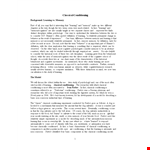Looking for examples of classical conditioning? Classical conditioning is a psychological concept that involves learning through associations between stimuli and responses. By understanding classical conditioning examples, you can gain insights into how certain behaviors and responses are learned and shaped.
One classical conditioning example involves Pavlov's famous experiment with dogs. In this experiment, Pavlov paired the sound of a bell (stimulus) with the presentation of food (response). Over time, the dogs began to associate the sound of the bell with the food, causing them to salivate even when the food was not present. This demonstrates how a neutral stimulus (the bell) can become a conditioned stimulus that elicits a response (salivation) through repeated pairings with an unconditioned stimulus (food).
Another classical conditioning example is Little Albert's experiment conducted by Watson and Rayner. In this experiment, they exposed a young boy to a white rat (neutral stimulus) and then startled him by striking a metal bar with a hammer (unconditioned stimulus). Eventually, the boy developed a fear response (conditioned response) towards the white rat, demonstrating how fears and phobias can be learned through classical conditioning.
Understanding classical conditioning examples can provide valuable insights into human behavior, learning, and conditioning. By recognizing these associations, we can better understand how certain behaviors are acquired and modified.

